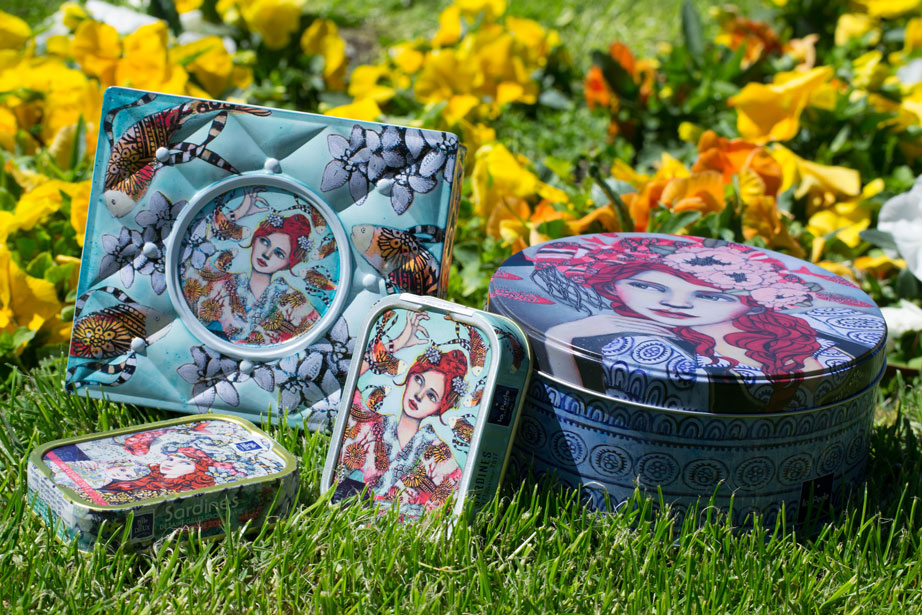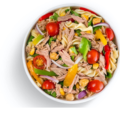In France, there is a growing trend known as the love of ‘millesimé‘ food cans. These preserves are purchased with the intention of storing them for years to satisfy culinary tastes and hobbies. And the fact is that more and more people are willing to pay “big money” for expired cans of canned food.
Millésime, a French cannery located in Saint-Gilles-Croix-de-Vie in the Pays de la Loire region, has maintained its heritage for over 100 years. But it was in 2005 when they decided to take another step forward with the introduction of their vintage preserves, stored for up to 10 years to improve their flavor. In addition, two French artists were used to create the packaging: Delphine Cossais and Coralie Joulin designed attractive and inspiring characters for each can.
In our country, an average of 28 kilograms of foodstuffs are discarded each year, which is equivalent to an outlay of 250 euros. This is accentuated during the warmer months, due to unexpected events and premature expiration of fruits and vegetables. At the European level, the percentage is even higher, as almost one fifth of the total produced ends up in the trash (88 million tons). Therefore, the idea of modifying food labeling to achieve a better understanding of the days of consumption has gained momentum. To avoid wasting food, it is important to distinguish between those products that must be consumed by a certain date and the rest. The best-before date applies only to highly perishable packaged products, such as eggs or a package of minced meat.
Most foods are given with an indication of the best time for consumption, although this does not mean that they become useless after that time. For example, yogurt can maintain its organoleptic properties intact even days after the deadline marked on its packaging. However, we can appreciate a slight modification in its flavor or texture, but this does not imply a danger when ingesting it. If you have any doubt about whether or not a product you are buying is past the expiration date, it is best to trust your sense of smell and taste a little to rule out any unpleasant taste. Experts always recommend using the sense of smell as the best method to determine food quality.
More and more people are buying to accumulate resources, to protect the environment or simply for fun. Miguel Ángel Lurueña, a food technology enthusiast and creator of the famous blog Gominolas de Petróleo, explained that the owners of the products are in charge of establishing the deadlines for consumption based on microbiological and chemical research, as well as sensory analysis.
The latest report prepared by the Ministry of Agriculture showed a significant figure: 26.1% of households do not waste anything. This is explained by the fact that these are families made up of older people who have more time to spend at home and knowledge about the oral tradition of recipes for utilization. On the contrary, young people are more environmentally conscious but do not know the recipes to make integral use of food.
The Argentine critic and writer based in Paris, Oscar Caballero, has talked about the reasons why some people keep tin cans for years. From a hedonistic perspective, there are those who do so due to the existence of folklore on the Atlantic coast, with collectors specializing in single-brand sardines. Waste is also mentioned as a threat to the world economy and also as an environmental damage.
According to Caballero, two decades ago, the cult of vintage cans began, especially of sardines, and even associations of tasters and collectors of dated cans appeared. But it is a fashion that is gaining popularity south of the Pyrenees. Alberto Fernández Bombín, a renowned professional in journalism, gastronomy and wine, has been burying preserved bottles in his house for a long time. His experimentation with these cans has concluded that oily fish stored in olive oil taste better after twenty or twenty-two years have passed. This is as common as in France there is now a market where cans are sold millimetrically classified (by vintage).
Jesús Lorenzo, who is part of the Galician cannery known as Los Peperetes, has also been responsible for stocking cans with ventresca or sardines, but so far only for special orders. Some customers even buy cans of the year to keep them in their cellars, where there are some that have been stored for more than thirty or even thirty-five years. What cannot be done is to sell canned goods after the indicated expiration date.
Miguel Ángel Lurueña warns us that canned food products, such as sardines, can also suffer decomposition that not only affects their quality of life. One of them is the production of diogenic amines, such as histamines, which if they reach the human body can trigger a severe allergic reaction with symptoms such as hives, swelling and difficulty breathing.
Alfonso Luque, author of the blog Gastrhomia, is the type of person who enjoys culinary experimentation with vintage and unusual things. He himself tasted a can of sardines from 1964 and found that although they had transformed into something similar to a dark pate, they still had a tasty hint of almond.
If you make the decision to eat bad canned food, you would be risking your health. This, according to a gastronomic connoisseur, who assures us that we should not trust strange smells and flavors or any peculiar appearance. In addition, it should be noted that buying this type of product is quite expensive, as some copies are often three times their original price.
Luque reiterated that the true value of his cans lay in their contents. And to celebrate the arrival of the Christmas holidays with his friends, he shared with them the 182 canned foods that made up his collection. The oldest product eaten was a can of Cuca sardines, after 25 years of canning.













